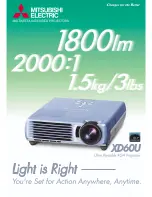
Notes to Appliance Usage Guide
The wattages on the Appliance Energy Guide are estimates. The estimated
wattage required for your appliances can be easily calculated. (NOTE:
1 kW=1000 watts; 2 kW=2000 watts and so on.) The formula for finding
wattage is: Volts x Amps = Watts (running). Always use starting factor when
calculating electrical load requirements for your generator. Select the appliances
you want to operate and add the starting wattages together to determine if they
can all be operated at the same time without exceeding the capacity of your
generator. NOTE: individual circuit breakers on your breaker panel may
control more than one appliance. Always determine which appliances/loads are
connected to specific breakers.
Worksheet Instructions
Write down the maximum and continuous wattage output ratings for your
generator in the boxes marked A.
From the Appliance Energy Guide, select the appliances that you wish to
operate and write them in column B. For each selected appliance, write its
corresponding starting factor and run watts in columns C and D respectively.
For each appliance that you have selected, multiply the starting factor by the
run watts and write the results or the load watts in column E. NOTE: Only
items that start simultaneously should be tallied in column D.
Finally, sum up all of the load wattages for each appliance and lights in column E.
Add each appliances load watts and write the number in box G. The number in box
G represents the total amount of load you plan to run on your portable generator.
Be sure that the total in box G does not exceed the generator size in box A.
Always select a generator that is as large or larger than the estimates for both
running and starting wattages.
Selecting a Portable Generator
Selecting a Portable Generator
What Kind of Generator Do I Need?
There are a wide variety of portable generators available for purchase. Some
are more suitable than others for connecting to your house. When selecting a
portable generator to connect to your house, you should ensure the
generator:
■
will not damage sensitive electronic
appliances/equipment,
■
provides the capacity to start needed motor
loads, such as a well or sump pump
■
has the necessary four-wire 20-amp or 30-
amp receptacle required to connect to
GenerLink
™
and
■
has a 120/240-volt connector.
As a guide, GenerLink
™
should be used with a generator that has the
following features:
■
a peak rating sufficient to start the largest motor you will be running
■
an automatic voltage regulator
■
‘low oil’ shut down
■
L14-20 or L14-30 locking or straight receptacles for connecting to
GenerLink
™
and
■
120/240-volt output
The quality of power produced by a portable generator is also an important
factor to consider when selecting your generator. If the voltage output is too
low, it could cause motors, such as your refrigerator or furnace motor, to
overheat. If the voltage output is too high, it could damage sensitive
electronic equipment such as your computer or the digital controls on your
heating system.
To maximize your generator’s power quality, it is recommended that your
generator have automatic voltage regulation. Electronic voltage regulation is
preferred over capacitor or condenser type regulation in instances where
sensitive electronic equipment is being operated.
What Size Generator Do I Need?
During a power outage, GenerLink
™
allows you to select the combination of
loads/appliances you want to operate by simply switching breakers in the
household breaker panel. This flexibility makes generator sizing easy.
!
CAUTION
Do not turn on your home’s heat pump or central air
conditioning while using GenerLink
™
. The starting
wattage for these devices exceeds GenerLink
™
’s
40-amp capacity.
14
11
Summary of Contents for GenerLink
Page 17: ......



































